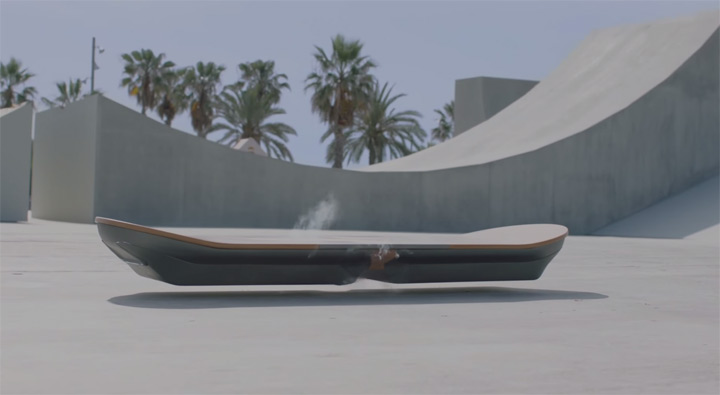TORONTO – Lexus is playing with the hearts of Back to the Future fans everywhere. The automaker has released a promotional video showing what it says is a real, working hoverboard.

But the video, released Tuesday, doesn’t actually show anyone riding the hoverboard; it only shows the device – dubbed SLIDE – appearing to hover above the ground.
According to Lexus’ website, SLIDE uses magnetic levitation and liquid nitrogen cooled superconductors to hover. But the luxury automaker hasn’t released any details beyond that.
“When technology, design and imagination come together, amazing things can be achieved,” reads the description of the promotional video.
“SLIDE is the fourth project in the ‘Amazing in Motion’ series and this time, we’ve challenged ourselves more than ever, in order to create something unique.”
Other projects in Lexus’ “Amazing in Motion” series include tiny quadrotor drones – dubbed SWARM – made out of 3D printed materials that use 3D mapping software and motion capture camera equipment to move seamlessly around objects and people.
Lexus isn’t the first company to attempt developing a real, working hoverboard.
In November, a U.S. startup launched a Kickstarter campaign for a hoverboard which uses magnetics to float about an inch off the ground. Dubbed Hendo, the board uses magnetics to float about an inch off the ground.
- Enter at your own risk: New home security camera aims paintballs at intruders
- High benzene levels detected near Ontario First Nation for weeks, residents report sickness
- Beijing orders Apple to pull WhatsApp, Threads from its China app store
- Boston Dynamics unveils ‘creepy’ new fully electric humanoid robot
READ MORE: Here’s what ‘Back to the Future II’ got right about 2015
But there are some catches. The Hendo currently only works for about 15 minutes before it needs recharging and can only operate over metal surfaces. And that price tag: $10,000.
However, the company successfully funded its Kickstarter campaign and plans to start shipping the boards in October.
Hoverboard’s are even being developed right here in Canada.
In May, Montreal-area resident Alexandru Duru broke the Guinness World Record for the furthest distance travelled on a hovercraft – one that he designed himself.
But Duru’s machine is quite different from other hoverboard-like designs. It uses hand controlled propellers on the bottom of the board to propel it into the air. Duru believes the machine will eventually be able to be used over land; however he has been testing it over water.
Lexus said it will continue to release regular updates on the project of its hoverboard project over the coming weeks.
However, it’s unknown whether or not the device is intended for the consumer market (or if the video is simply part of a promotional stunt for the company).




Comments